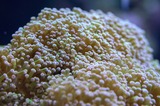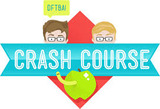
Hank continues our exploration of animal phyla with the more complexly organized annelida and arthropoda, and a biolography on insects.
- Subject:
- Biology
- Science
- Material Type:
- Activity/Lab
- Author:
- Crashcourse
- Date Added:
- 01/31/2019

Hank continues our exploration of animal phyla with the more complexly organized annelida and arthropoda, and a biolography on insects.

The computer program's simulation of a Sonoran desert community should ultimately strengthen the student's comprehension of what is required for a natural ecosystem to sustain itself (remain in balance). This computer simulation program has great flexibility. It allows the student to manipulate the population numbers of five Sonoran Desert species. A species natural history attachment provides vital information for the students to familiarize themselves with each species' behaviors, its niche and food resource needs. The program includes two producers, the Saguaro cactus and the Ironwood Tree. It also includes 3 consumers, but their interactions both toward the producers and each other differ. The community's ability to remain in balance and sustain all five species so that none die out rests on the student's assessment skills enabling him to correctly identify these dependencies. The student learns by trial and error as he continues to fine tune the ecosystem that he maintains stewardship of.

Hank wraps up the Crash Course on ecology by taking a look at the growing fields of conservation biology and restoration ecology, which use all the kung fu moves we've learned about in the past eleven weeks and apply them to protecting ecosystems and to cleaning up the messes that we've already made.

Is the food chain shown above accurate? Does the first link depict a producer, the second link a herbivore, and the third link an omnivore / carnivore? Students must correctly determine whether a species is a producer or consumer, and what type of consumer; herbivore, omnivore, or carnivore. Students are provided with a list of Sonoran Desert species and asked to construct, within their groups, several food chains. These food chains are then be used to construct a food web. In order to complete this activity, students must first research the individual species to understand their feeding habits.

Corals are beautiful, diverse and complex structures. Nearly everyone knows about Coral Reefs, but do you know what they actually are...? Coral Reefs are vital animals that provide the foundation for the richest diversity in the ocean. Explore the important role that corals have for the oceans worldwide, and understand how our small choices can have a powerful impact on life in the ocean.

Watch online, learn more about eyes, and do your own dissection.

CrashCourse offers many YouTube videos that support various historical topics, such as sociology, world history, and much more!

Developed for third grade. Students observe a crystal growth process.Biology In Elementary Schools is a Saint Michael's College student project. The teaching ideas on this page have been found, refined, and developed by students in a college-level course on the teaching of biology at the elementary level. Unless otherwise noted, the lesson plans have been tried at least once by students from our partner schools. This wiki has been established to share ideas about teaching biology in elementary schools. The motivation behind the creation of this page is twofold: 1. to provide an outlet for the teaching ideas of a group of college educators participating in a workshop-style course; 2. to provide a space where anyone else interested in this topic can place their ideas.

Hank imagines himself breaking into the Hot Pockets factory to steal their secret recipes and instruction manuals in order to help us understand how the processes known as DNA transcription and translation allow our cells to build proteins.

Hank introduces us to that wondrous molecule deoxyribonucleic acid - also known as DNA - and explains how it replicates itself in our cells.

Your body is made of cells -- but how does a single cell know to become part of your nose, instead of your toes? The answer is in your body's instruction book: DNA. Joe Hanson compares DNA to detailed manual for building a person out of cells -- with 46 chapters (chromosomes) and hundreds of thousands of pages covering every part of you.

Developed for second grade. Students will: use their sense of touch and sight to discover differences between several types of seeds; discuss why seeds come in different shapes and sizes; make connections between art and science; discuss the growth process of a seed; discuss how different seeds are used in different products.Biology In Elementary Schools is a Saint Michael's College student project. The teaching ideas on this page have been found, refined, and developed by students in a college-level course on the teaching of biology at the elementary level. Unless otherwise noted, the lesson plans have been tried at least once by students from our partner schools. This wiki has been established to share ideas about teaching biology in elementary schools. The motivation behind the creation of this page is twofold: 1. to provide an outlet for the teaching ideas of a group of college educators participating in a workshop-style course; 2. to provide a space where anyone else interested in this topic can place their ideas.

The Challenge Question of the Legacy Cycle draws the student into considering the engineering ingenuity of nature. It will force him to analyze, appreciate and understand the wisdom of these designs as the student team focuses on meeting each of the challenge's requirements. The student is asked, with his team members, to envision a sustainable design for a future guest village within the Saguaro National Park, outside of Tucson, Arizona. What issues need to be addressed to support the comforts of park visitors without compromising the natural resources or endangering the endemic species of the area? A deeper scope of application will reveal extensions of this design in the incorporation of urban planning and systems design. It also strengthens the concept of manufacturing and building without producing waste or pollution.

Mrs. Crowell takes her 2nd and 3rd graders on a nature walk where they use a dichotomous key to identify different species they encounter. This lesson shows a simple way to take students out on a walk and teach them how to identify species, no matter where they are.

Hank takes us through the bowels of the human digestive system and explains why it's all about surface area.

Students learn about memory by doing a memory-writing exercise, studying the brain to understand how it affects memory, reading Li-Young Lee's poem ńMnemonic,î and creating projects to demonstrate their understanding.

Following the steps of the iterative engineering design process, student teams use what they learned in the previous lessons and activity in this unit to research and choose materials for their model heart valves and test those materials to compare their properties to known properties of real heart valve tissues. Once testing is complete, they choose final materials and design and construct prototype valve models, then test them and evaluate their data. Based on their evaluations, students consider how they might redesign their models for improvement and then change some aspect of their models and retest aiming to design optimal heart valve models as solutions to the unit's overarching design challenge. They conclude by presenting for client review, in both verbal and written portfolio/report formats, summaries and descriptions of their final products with supporting data.

This Earth Observatory site contains data and images from NASA's Earth Observatory project. The purpose of NASA's Earth Observatory is to provide an accessible publication on the Internet where the public can obtain new satellite imagery and scientific information about our home planet. The focus is on Earth's climate and environmental change. The site is useful to public media and educators. Data and images can be obtained for a variety of subjects, the Earth's atmosphere, land, life on earth, oceans and heat and energy. Users can enter data on a variety of topics and produce animations depicting the data entered. The site also contains a helpful section explaining how to build animations and globe animations.

Developed for third grade. This experiment will introduce students to one form of ecosystem as well as demonstrate how earthworms and the foods they eat affect the environment in which they live.Biology In Elementary Schools is a Saint Michael's College student project. The teaching ideas on this page have been found, refined, and developed by students in a college-level course on the teaching of biology at the elementary level. Unless otherwise noted, the lesson plans have been tried at least once by students from our partner schools. This wiki has been established to share ideas about teaching biology in elementary schools. The motivation behind the creation of this page is twofold: 1. to provide an outlet for the teaching ideas of a group of college educators participating in a workshop-style course; 2. to provide a space where anyone else interested in this topic can place their ideas.

How many calories are in your favorite foods? How much exercise would you have to do to burn off these calories? What is the relationship between calories and weight? Explore these issues by choosing diet and exercise and keeping an eye on your weight.